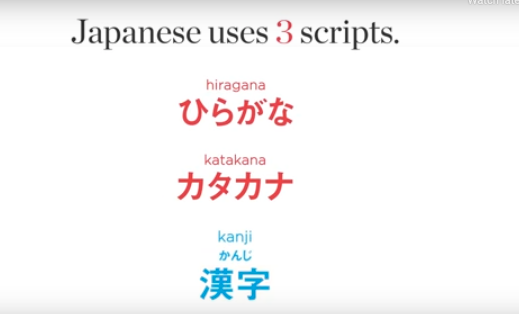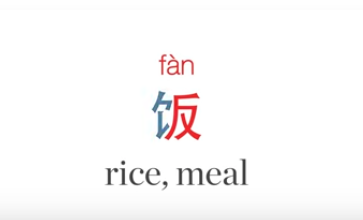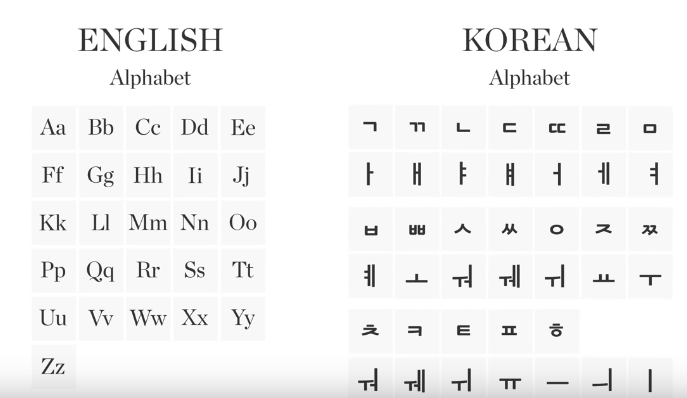People will often want to know if Japanese is similar to Korean or Chinese as a language.
Or if they’re different.
And which is easier to learn.
So, if you want to learn a bit about Japanese vs. Korean vs. Chinese language, you’re at the right place.
Number of Speakers
One major difference between Japanese vs. Korean vs. Chinese languages is…
The number of speakers in the world.
When deciding whether to learn a language, you should determine how useful it could be when trying to communicate with other people. Because of the large size of China, the number of native Chinese speakers is about 1.3 billion speakers. In comparison, Japanese has 126 million native speakers, and Korean has 75 million native speakers.
For some people, that matters. For others it doesn’t.
But at the least, it goes to show you how many speakers there are for each language.
Writing systems
- Summary: Mostly different, although there are similarities between Chinese and Japanese
Each of these languages has a unique writing system that is different from the other.
Japanese uses 3 writing systems combined: hiragana, katakana, and kanji. Hiragana is a phonetic writing system that is mainly used in situations that are functional for grammar. Katakana is used when words are borrowed words from other languages. Kanji is a writing system that was incorporated from Chinese, and it is used for words that have solid meanings like nouns, verbs, adjectives, etc.

The Chinese use a writing system that consists of logograms — known as Hanzi. These logograms can represent certain words or certain sounds. This makes Chinese one of the most complex languages to read. You cannot rely on how the characters look to know how they should be pronounced. So, the only way to learn to read and write Chinese is to memorize the thousands of different characters.

So, in the case of Japanese vs Chinese language, there is some similarity — both use Chinese characters.
In contrast, the Korean language uses something called the Hangul alphabet. This is also a phonetic writing system where letters correspond to vowels and consonants.

Pronunciation
- Summary: Different for each language
Another difference between Japanese vs. Korean vs. Chinese language is …?
Pronunciation.
Chinese, Korean, and Japanese all sound very different from each other. If you want to hear how they sound like, check out the free lessons below – press the play button below to listen to each language.
| Japanese | 3-Minute Japanese by JapanesePod101 (click here for more lessons like this) | |
| Korean | 3-Minute Korean by KoreanClass101 (click here for more lessons like this) | |
| Chinese (Mandarin) | 3-Minute Chinese by ChineseClass101 (click here for more lessons like this) | |
| Chinese (Cantonese) | 3-Minute Cantonese by CantoneseClass101 (click here for more lessons like this) |
Out of the 3, Chinese is the only tonal language. In Mandarin Chinese, four tones are used; in Cantonese, there are six different tones.
In the case of Japanese vs Korean language…
Korean and Japanese are both phonetic languages, so they don’t need to have pitches or tones to change the meaning of the words.
However, the Korean language can have complex vowel sounds that can be difficult. There are ten different vowel sounds in Korean compared with just five vowel sounds in Japanese.
Vocabulary
- Summary: Some similarities exist across 3 languages.
These three languages do have some similarities when it comes to words.
Why? This is mainly due to the Chinese influence over both Japan and Korea. Japan still uses Chinese characters incorporated into kanji, and Korea used Chinese characters in their old writing. This means that the 3 languages can have similar words that sound similar to each other.
For example, the word for insect is “konchu” in Japanese, “kūnchóng” in Chinese, and “gonchung” in Korean.
Another commonality among the three languages is that many English words have also entered the language. For example, vitamin in Korean is “bitamin,” Japanese is “bitamin,” and in Chinese, it is “wéitāmìng.”
Grammar
- Summary: Korean & Japanese are similar.
When comparing Korean vs Japanese language… in terms of grammar…
…there 2 languages are similar.
They both use Subject-Object-Verb order when forming sentences. For example, to say “I eat food” in Korean and Japanese would be more like “I food eat.”
With Chinese, the grammar structure is similar to English. This means that Chinese follows Subject-Verb-Object structure. Also, in Chinese, there are no verb conjugations. The verb stays the same no matter what tense is being referred to. However, both Japanese and Korean conjugate verbs based on tenses and other situations.
Honorifics
- Summary: Similar for all 3 languages.
Honorifics play an important role in all three languages — so this is a similarity.
Honorifics are titles or words that show respect to another person.
Along with other elements that contribute to someone’s social status, seniority is an important part of Korean, Japanese, and Chinese culture. To show respect to someone older, all three languages use various words and titles to add to people’s names. In Chinese, if you’re talking to your teacher, you would have to add “lǎoshī” to the person’s name. In Japanese, you would add “sensei”; in Korean, it is “sun seng nim.”
Distinct language families
- Summary: Different language families.
Despite having similarities — as mentioned above — the origins of these languages are all distinct from each other.
Korean belongs to the Koreanic language family. Japanese is in the Japonic language family. And Chinese is part of the Sino-Tibetan language family. All 3 languages have developed apart from each other. With the Korean and Japanese languages, they were later heavily influenced by the Chinese.
Difficulty in Learning
- Summary: All 3 are considered hard to learn. However, Korean would be the easier one.
All 3 languages are difficult to learn, especially for those of us from languages that use the Latin alphabet.
The biggest hurdle? The writing.
But, Korean is probably the easiest to learn among the 3 because…. because there is one phonetic alphabet system.
In comparison, Chinese and Japanese languages require you to know around 1,000 to 2,000 Chinese characters to be able to read and write the language for daily use. According to the Foreign Service Institute, all three languages are in the most difficult rating for English speakers to learn.
Of course, that doesn’t stop people from learning these languages.
There are millions of people learning Japanese, Chinese, and Korean right now.
If you google around or look for YouTube videos, you’ll find million of results. So, don’t let the difficulty scare you away.
Back to You
Now, you know a bit about Japanese vs. Korean vs. Chinese languages…
What makes them similar.
What makes them different.
What makes them unique.
And which one you should learn. Well, actually, I can’t tell you which to learn. People decide to learn languages for their own personal reasons, not because of blogs like this.
But, if you ARE interested in learning Japanese, Korean, or Chinese…. I do recommend lessons by JapanesePod101, KoreanClass101, ChineseClass101 and CantoneseClass101. Click on the link(s) below to get more free lessons and try out their learning program.
| Japanese | 3-Minute Japanese by JapanesePod101 (click here for more lessons like this) | |
| Korean | 3-Minute Korean by KoreanClass101 (click here for more lessons like this) | |
| Chinese (Mandarin) | 3-Minute Chinese by ChineseClass101 (click here for more lessons like this) | |
| Chinese (Cantonese) | 3-Minute Cantonese by CantoneseClass101 (click here for more lessons like this) |
– Team IJ